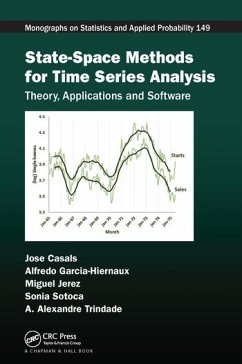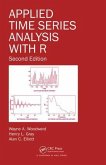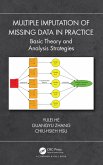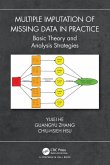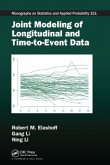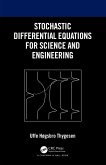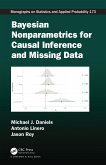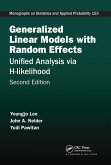The state-space approach provides a formal framework where any result or procedure developed for a basic model can be seamlessly applied to a standard formulation written in state-space form. Moreover, it can accommodate with a reasonable effort nonstandard situations, such as observation errors, aggregation constraints, or missing in-sample values.
Exploring the advantages of this approach, State-Space Methods for Time Series Analysis: Theory, Applications and Software presents many computational procedures that can be applied to a previously specified linear model in state-space form.
After discussing the formulation of the state-space model, the book illustrates the flexibility of the state-space representation and covers the main state estimation algorithms: filtering and smoothing. It then shows how to compute the Gaussian likelihood for unknown coefficients in the state-space matrices of a given model beforeintroducing subspace methods and their application. It also discusses signal extraction, describes two algorithms to obtain the VARMAX matrices corresponding to any linear state-space model, and addresses several issues relating to the aggregation and disaggregation of time series. The book concludes with a cross-sectional extension to the classical state-space formulation in order to accommodate longitudinal or panel data. Missing data is a common occurrence here, and the book explains imputation procedures necessary to treat missingness in both exogenous and endogenous variables.
Web Resource
The authors' E4 MATLAB® toolbox offers all the computational procedures, administrative and analytical functions, and related materials for time series analysis. This flexible, powerful, and free software tool enables readers to replicate the practical examples in the text and apply the procedures to their own work.
Exploring the advantages of this approach, State-Space Methods for Time Series Analysis: Theory, Applications and Software presents many computational procedures that can be applied to a previously specified linear model in state-space form.
After discussing the formulation of the state-space model, the book illustrates the flexibility of the state-space representation and covers the main state estimation algorithms: filtering and smoothing. It then shows how to compute the Gaussian likelihood for unknown coefficients in the state-space matrices of a given model beforeintroducing subspace methods and their application. It also discusses signal extraction, describes two algorithms to obtain the VARMAX matrices corresponding to any linear state-space model, and addresses several issues relating to the aggregation and disaggregation of time series. The book concludes with a cross-sectional extension to the classical state-space formulation in order to accommodate longitudinal or panel data. Missing data is a common occurrence here, and the book explains imputation procedures necessary to treat missingness in both exogenous and endogenous variables.
Web Resource
The authors' E4 MATLAB® toolbox offers all the computational procedures, administrative and analytical functions, and related materials for time series analysis. This flexible, powerful, and free software tool enables readers to replicate the practical examples in the text and apply the procedures to their own work.
"The way the authors of describe their book, it is the fruit of a long-lasting love affair with state space models, which started in the 1980s, inspired by the work of Box and Jenkins. Judging from the density of equations and symbols, it must be the theory of the subject that attracts them most. ... This book is not for the fainthearted. It explains a lotabout state space models. To use them, you have to accept the philosophy of detailed modelling of time series. In summary, if you are a specialist, or want to become one, you will like this book."
- Paul Eilers, ISCB News, May 2017
"This book synthesizes and presents the computational advantages of the state-space approach over the traditional time domain approaches to linear time series analysis. The explicit connection between the mainstream ARIMA time series models and the state-space representation, one of the main features of the book, is achieved by presenting many examples and procedures to combine, decompose, aggregate, and disaggregate an economic time series into the state-space form. More specifically, it provides a bridge for going back and forth between state-space models and the broad class of VARMAX models...Overall, this is a useful book on sate-space methods for time series analysis and covers substantial amount of material lucidly with a focus on computational aspects and software. It is an excellent reference book for self-study and can also be used as a companion for teaching time series analysis along with a standard time series text."
-Mohsen Pourahmadi, Texas A&M University, in the Journal of Time Series Analysis, June 2017
- Paul Eilers, ISCB News, May 2017
"This book synthesizes and presents the computational advantages of the state-space approach over the traditional time domain approaches to linear time series analysis. The explicit connection between the mainstream ARIMA time series models and the state-space representation, one of the main features of the book, is achieved by presenting many examples and procedures to combine, decompose, aggregate, and disaggregate an economic time series into the state-space form. More specifically, it provides a bridge for going back and forth between state-space models and the broad class of VARMAX models...Overall, this is a useful book on sate-space methods for time series analysis and covers substantial amount of material lucidly with a focus on computational aspects and software. It is an excellent reference book for self-study and can also be used as a companion for teaching time series analysis along with a standard time series text."
-Mohsen Pourahmadi, Texas A&M University, in the Journal of Time Series Analysis, June 2017

